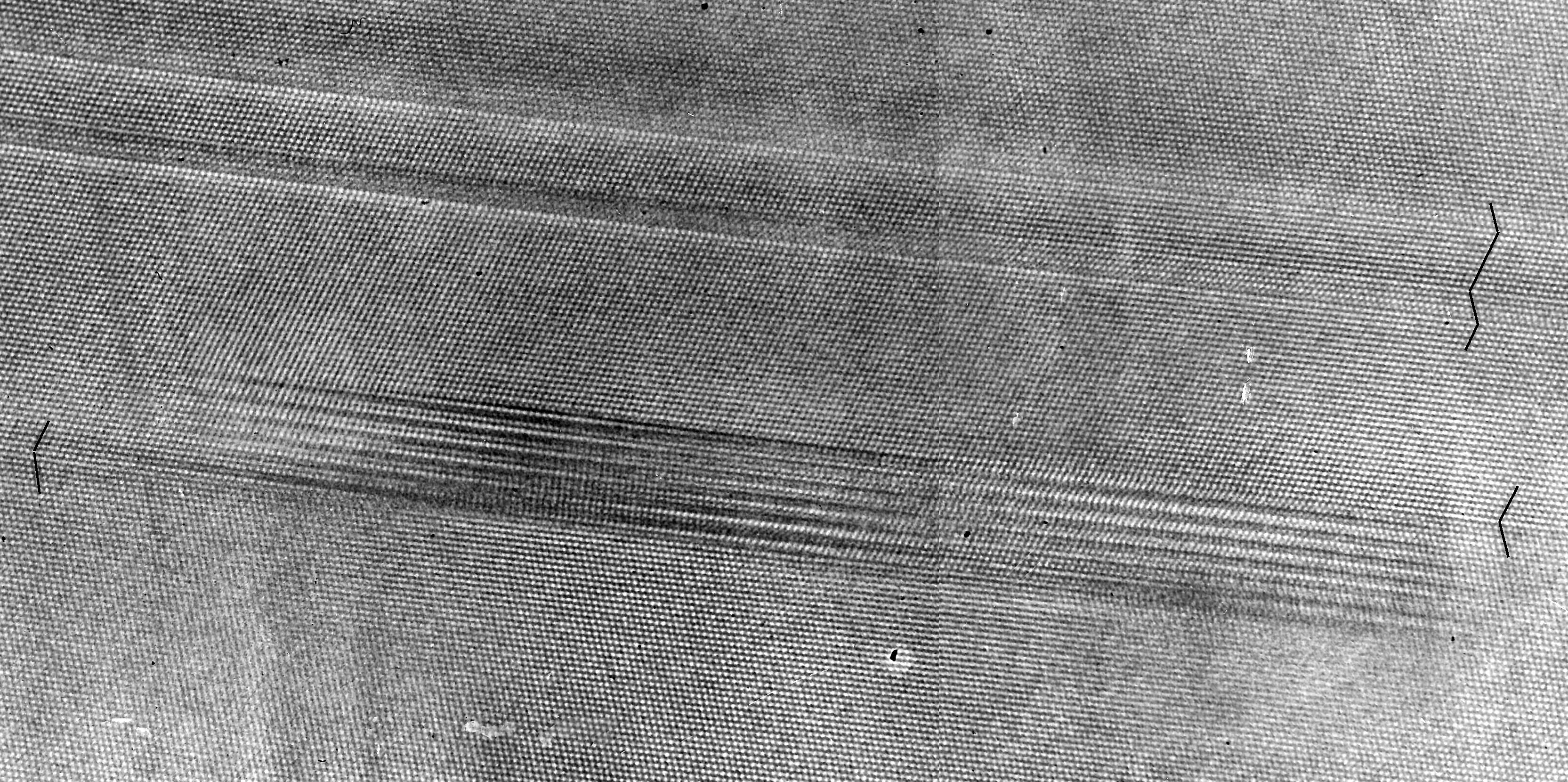| |

|
Same as Fig. 10 in the report.
Scanned form a large scale print in two parts and "glued" together.
|
That is a very special picture. I fondly believe that it is the first HRTEM picture of a non-trivial
defect in Si. The “striped” structure is an incoherent twin boundary.
Still rather trivial but a notch
above simple stacking faults and coherent twin boundaries. We see about 60 % of the negative area. We also see it with optimized
contrast.
The negative actually had too much contrast on a large scale, i.e. some parts were rather bright and others
dark. The way to to deal with that in the old days of yore
was to produce a de-focussed positive of the negative that
blurred the details but kept the large scale contrast. Then you superimpose this positive on the original
negative,
i.e. where the original negative was very bright you had dark regions in the positive and vice verse. Thusly you evened
out the large scale brightness variations.
From the (physically, took some precision work) superimposed negative /
positive combinations you produced a new negative that now was rather homogeneous
in the over.-all brightens (took
some experimenting with various positives). Of course this negative also lost some of the short range contrast which you
tried to
counter by printing on “hard” paper. Altogether you spent many hours in the dark room. The result,
however, was worth it!
I never published sixths picture because the reductions in size necessary for any journal
would make it impossible to see anything.
D. Ast, my advisor then, later published it in one of his articles and –
surprise! - you don’t see anything. |
|